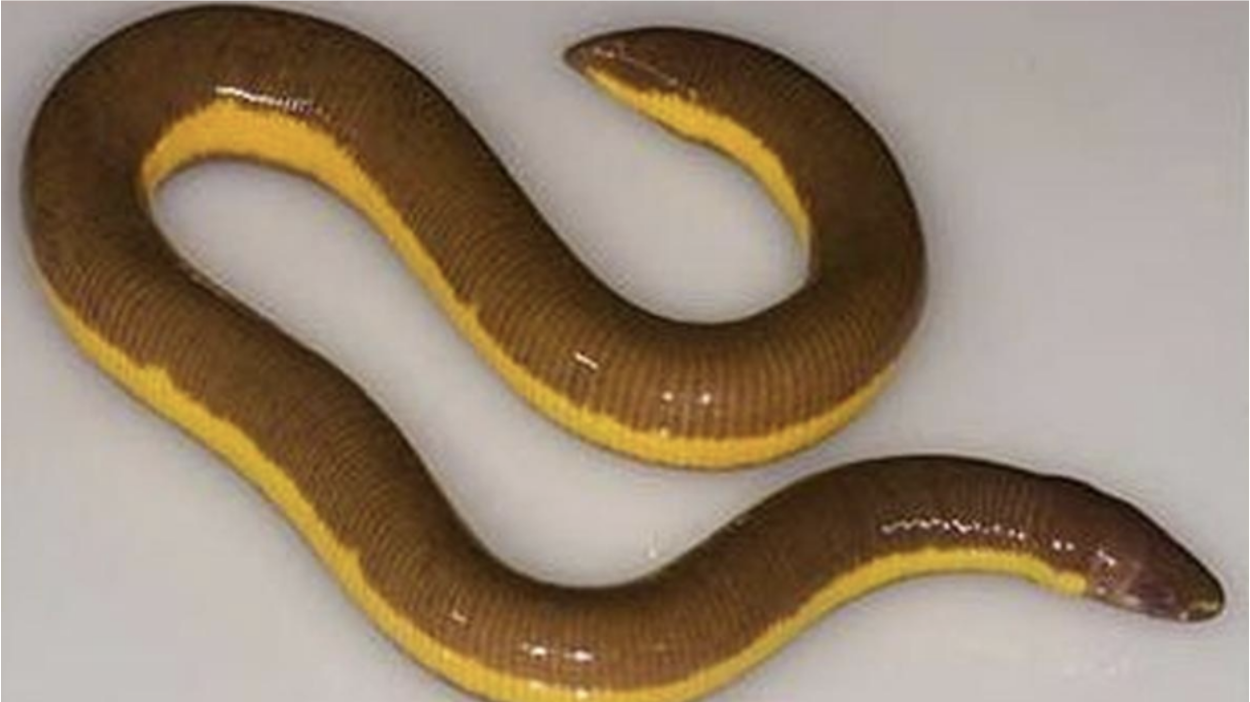News Excerpt:
A limbless amphibian has been added to the fauna in the Kaziranga National Park and Tiger Reserve.
- A team of herpetologists recorded the striped caecilian (Ichthyophis spp) in the tiger reserve for the first time during a rapid herpetofauna survey conducted from June 14-17.

About Caecilian
- Caecilians are elongated, segmented amphibians without limbs, classified in the order Gymnophiona or Apoda.
- They are grouped with frogs and salamanders. Resembling earthworms or snakes due to their lack of limbs, caecilians are named for their tendency to have small or no eyes under their skin.
- Caecilians vary greatly in size, with some smaller species measuring less than three inches, while the largest known species, Caecilia thompsoni from Colombia, can reach almost five feet in length.
- There are approximately 200 known species of caecilians. They predominantly inhabit moist tropical and subtropical regions of South and Central America, South and Southeast Asia, and Sub-Saharan Africa. These elusive creatures spend most of their lives underground, burrowing in forests, grasslands, savannas, shrublands, and wetlands.
- Adapted for underground living, they have small eyes, sometimes covered by skin, and use chemically-sensitive tentacles (short sensory tentacles located between their eyes and nostrils) to detect food and navigate.
- They are powerful diggers with smooth, slimy skin, sometimes toxic.
- Found in tropical regions, caecilians primarily live underground or in shallow waters.
- They are not dangerous to humans and eat earthworms and insects.
- Reproduction varies; some lay eggs, while others give birth to live young, with unique maternal care behaviors like skin-feeding and matriphagy.
- As they are ancient species, their presence holds critical linkages to evolution and intercontinental speciation.
Herpetofauna
- Herpetofauna, comprising reptiles and amphibians, are among the least researched yet highly susceptible to climate change. They serve as environmental indicators and play a critical role in pest management.


